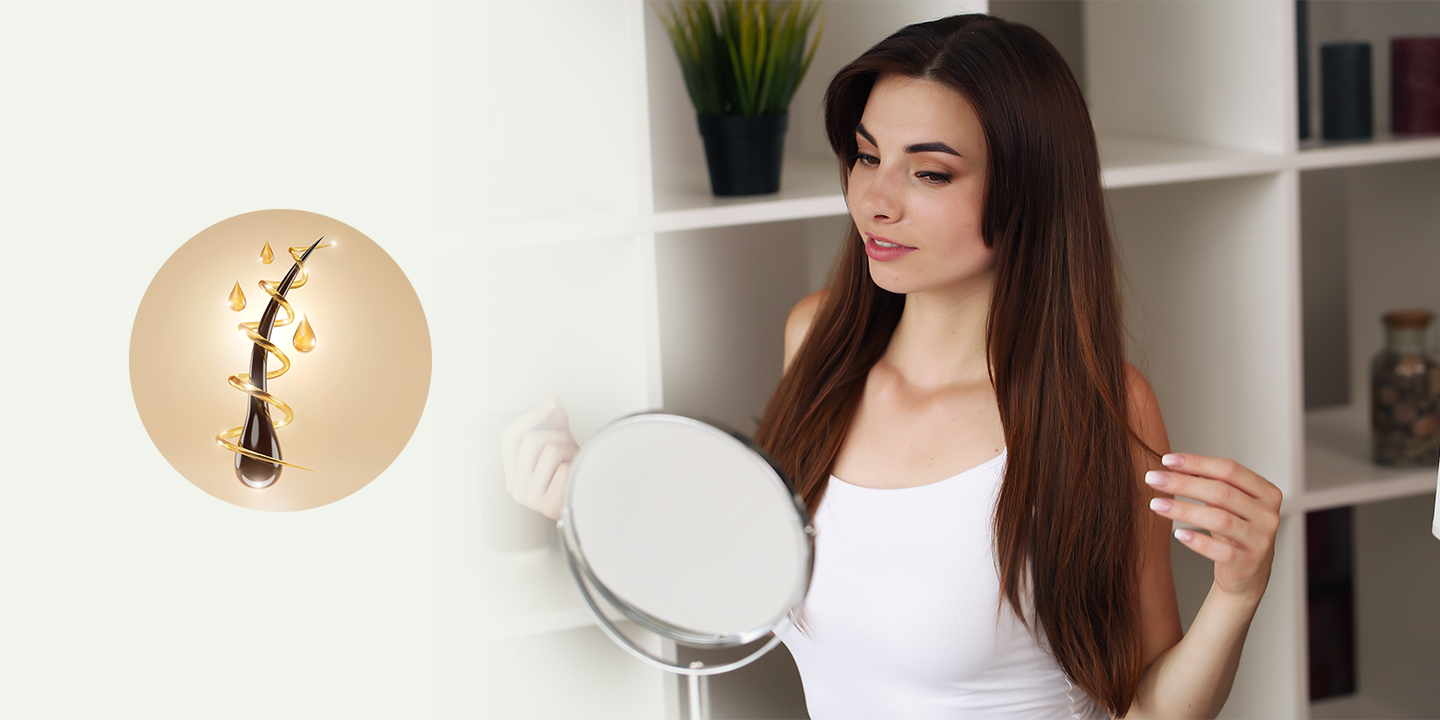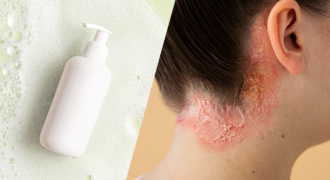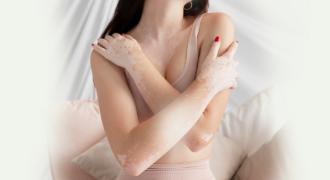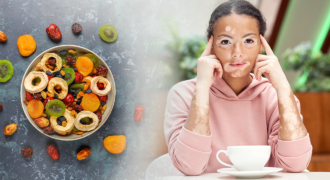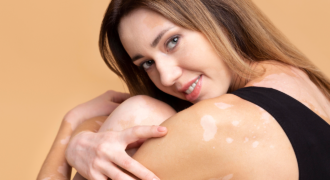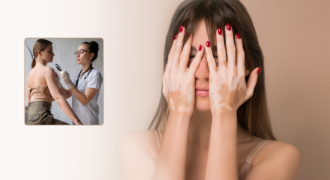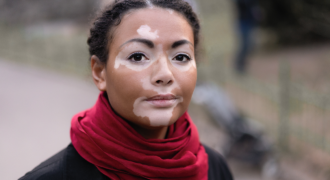But did you know that melanin plays an equally important role in your hair color?
Hair color is a beautiful reflection of our unique genetic makeup. Melanin, a pigment produced by melanocyte cells, plays a starring role in determining hair shade. The correlation between melanin and hair color is very mysterious.
If you are looking for ways to naturally boost your melanin production in your hair, to be able to darken your hair color naturally, you have come to the right place.
What is the Correlation Between Hair Color and Melanin?
Melanin has two main types: eumelanin (responsible for brown and black hair) and pheomelanin (contributing to red and blonde tones). The ratio of these pigments determines hair color.
So, if you have been curious to unveil the correlation between melanin and hair color, we hope this explains the gist of it. Not only does melanin help develop your hair color, but it also shields your hair against the sun.
Studies indicate that melanin, like the skin, has photoprotection properties against UV rays for hair, too. So, if you have dark-colored hair, you already have more protection against sunlight than someone with light-colored hair, like blonde.
Furthermore, the slowed-down production of melanin, which happens with age, can also affect the hair’s vitality. So, this explains why you’d want to implement ways to naturally increase the melanin content in your hair.
20 Natural Ways to Increase Melanin Production
Now that you have a brief understanding of how melanin production works and correlates with hair color and vitality, the next question is, “How do I increase melanin production for hair?”
To be fair, there is no “single” answer to this question. You have to be mindful of several aspects and use a holistic approach. We have sorted the natural ways to increase melanin production into different categories to make it easier to understand them.
Dietary Strategies to Boost Melanin for Hair
When discussing natural ways to boost melanin production for hair, it makes sense to pay close attention to dietary factors. This includes prioritizing the consumption of melanin-rich foods.
There are a few that we’d have to highlight for better understanding:
1. Embrace the rainbow
Confused? When we mention that you need to embrace the rainbow, we basically mean eating a diet rich in colorful fruits and vegetables. The main reason? These food sources are rich in antioxidants, which are integral to averting free radical damage in the body. When you are able to combat free radicals, you can successfully avert the triggers that damage the melanocytes.
Foods to include:
Leafy greens, berries, citrus fruits, bell peppers, etc.
2. Copper rich foods
There are proven research and studies that highlight the importance of copper in promoting melanin synthesis in the body. So, if you are looking for foods for melanin production, include foods with a high copper content naturally in them.
Foods to include:
Liver, shellfish, nuts, seeds, whole grains, etc.
3. Vitamin A foods
Besides being a good source of antioxidants, Vitamin A plays a significant role in promoting cell differentiation. So, when looking for ways to improve melanin production in the body, including Vitamin A-rich foods is an absolute must. With enhanced cell differentiation, Vitamin A also promotes the production of melanocytes, which, in turn, triggers melanin production.
Foods to include:
Sweet potatoes, carrots, spinach, orange-fleshed fruits.
4. Vitamin B complex
Now that we are already on top of vitamins, we had to include the Vitamin B complex. Vitamin B12, in particular, has promising benefits in improving hair health and potentially helping with melanin production, too.
Foods to include:
Poultry, fish, eggs, dairy, fortified cereals, etc.
5. Vitamin E
In a previous section, we highlighted the importance of antioxidants for navigating the complexities of melanocyte damage. When the body has enough antioxidants, warding off factors contributing to melanocyte damage becomes much more seamless. This ensures that melanin production is happening smoothly, keeping its effects on hair color constant, too.
Foods to include:
Sunflower seeds, almonds, avocados, olive oil, etc.
6. Hydration
Besides consuming melanin-rich foods for hair, you also need to prioritize hydration. There’s nothing that beats well-hydrated skin and health. When you stick to a routine of prioritizing your hydration, you are basically supplying the scalp and the hair follicles with the water they need to flourish. Optimal hydration indirectly supports melanin production in the body.
7. Protein intake
Melanin production and hair quality both depend on the content and quality of protein that you are consuming daily. Since hair is made of keratin, primarily protein, you have to supply the hair with what it needs to look and feel healthy.
Foods to include:
Lean meat, fish, eggs, nuts, beans, and other protein sources based on your dietary preferences.
8. Iron-rich foods
The last category of foods containing melanin or foods promoting melanin production is consuming iron-rich foods. Since iron deficiency is associated with hair loss, it makes sense that you have to include foods rich in iron to combat that complication. Healthy blood circulation indirectly influences pretty much every other physiological function in the body, including melanin production for your hair.
Prioritizing Scalp Care for Melanin Production
While relying on food with high melanin can help balance its presence and promote hair color and vitality, there are a few other factors to consider as well.
Here’s a four-step routine for it:
9. Massage your scalp
One of the main reasons you might be struggling with poor melanin production is optimal blood circulation in the scalp. When you gently massage the scalp, you indirectly trigger blood circulation, which promotes hair growth and keeps your melanin production in check.
Tips to follow –
When massaging your scalp, use some kind of massage oil in the scalp. You can massage for 5-10 minutes for optimal results.
10. Gentle cleansing
Dirt, sweat, and debris on the scalp are probably the biggest reasons behind the lack of hair vitality and poor melanin production. You have to remember that taking care of your scalp indirectly helps preserve or enhance the melanin production in your scalp region. You cleanse the scalp with gentle cleansing without stripping off the natural oils.
Tips to follow –
Using sulfate-free shampoos and hair care cleansers is considered ideal for keeping the scalp environment susceptible to melanin production.
11. Conditioning
We can’t stress this enough, but if you aren’t conditioning your scalp, you are already missing out on many benefits. Regular conditioning has proven benefits in maintaining moisture balance in the scalp, thereby preventing further damage. This, in turn, creates a healthy environment for melanin production in the future.
Tips to follow –
Ensure you constantly wash away the conditioner after the shower.
12. Scalp exfoliation
Should you or should you not? Scalp buildup can occur when you don’t pay close attention to what’s going on in your scalp. Using a gentle scalp scrub at least once a week is probably one of the best ways to cleanse and exfoliate the scalp to get rid of dead skin cells and promote a healthy scalp environment optimal for hair growth.
Tips to follow –
Avoid over-exfoliating the scalp because that’s what leads to complexities.
Lifestyle Choices for Melanin Support
Melanin production for hair color and quality is dependent on several factors beyond the food you eat. Your lifestyle is also one of the factors. In addition to including melanin-producing foods in your diet, you also have to introduce lifestyle changes.
The following are a few factors:
13. Reduce stress
Chronic stress has a direct impact on hair, so it makes sense to find ways to keep your stress levels in check. Creating a balanced internal environment is key to managing stress and also preventing hair breakage and damage. With optimal stress management, the body also creates an environment suitable for optimal melanin production.
Practices to follow –
Meditation, yoga, or deep breathing
14. Sun protection
Some studies indicate that excessive sun exposure can damage the hair and hinder melanin production. So, sun protection is a must if you aim to boost melanin in your hair to darken the hair color naturally.
Practices to follow –
Use leave-in conditioners with SPF, wear an umbrella, and wear a hat.
15. Quality sleep
The amount of sleep you get in a day has a direct influence on the melanin production in your hair. Poor sleep hinders the body’s ability to repair and restore itself, which, in turn, influences the melanin production in the hair.
Practices to follow –
Ensure you get at least 8-9 hours of quality sleep daily.
Ayurvedic Remedies for Boosting Melanin for Hair
Beyond modern medicine, ayurvedic remedies can also help boost the melanin production in your hair. When you pair food rich in melanin for hair with ayurvedic remedies, the results are quite promising, to say the least.
Following are a few remedies worth prioritizing:
16. Brahmi Bringaraj Talia
If you are struggling with hair fall, premature greying, etc., the application of this hair oil can be a game-changer. Made with a concoction of all-natural ayurvedic ingredients, the oil has nourishing properties that are great for your hair. It nourishes the dry scalp, which, in turn, helps with melanin production as well.
17. Henna
This might be a bit of a workaround, but Henna or Mehendi leaves have natural dying properties. The natural dye property of this ayurvedic ingredient adds color to your hair, which helps mimic melanin’s functions. You can mix hot water and lime juice to your henna, apply it on your hair, and leave it for 30-60 minutes for optimal results.
18. Coconut Oil
Surprisingly, coconut oil has been a hair superfood for decades, if not centuries. Not only does it nourish the scalp, but coconut oil also keeps the scalp cool and away from distress. While it can be used on its own, mixing coconut oil with amla, curry leaves, or aloe vera has been found to be even more promising in keeping your hair healthy and promoting melanin production.
19. Bringamalakadi Talia
Another hair oil that’s great for your scalp and hair health is Bringamalakadi Talia. It is quite underrated, and most people aren’t even aware of it. However, applying this oil boosts blood circulation and reduces excessive scalp heating. This, in turn, prevents the growth of grey hair and keeps your hair’s melanin production in check.
20. Sesame Seed Oil
Last but not the least is using sesame seed oil. This is another food rich in melanin that’s worth including in your diet and hair care routine. Sesame oil is rich in antioxidants, which prevents hair greying. The versatility of this oil is what makes it such a popular choice. You can either eat it as part of your diet or apply it to your scalp.
Consistency is Key
While these strategies offer promising avenues, significant and lasting results may take time. Consistency is key. By incorporating these practices into your routine, you can create a holistic approach to promoting healthy hair growth and potentially supporting natural melanin production.
Additionally, when you are hyperfocused on these “melanin increase food,” you also have to remember that genetics play a vital role in your hair color. So, while using these methods might help you darken the hair color to a certain degree, your natural hair color is usually all in your genes, and there’s not much you can do about it.
Conclusion
By embracing a balanced diet, gentle hair care practices, and healthy lifestyle choices, you can nurture your hair’s natural beauty and potentially enhance its melanin levels. Remember, healthy hair is beautiful, and a holistic approach is the key to unlocking your hair’s full potential.
At Kayakalp Global, we are here to provide you with relevant treatment plans to boost melanin production in your hair. Usually, in patients with vitiligo, the sudden reduction in melanin might also affect hair color. Our objective is to identify the alarming signs and implement relevant measures to mitigate the risks early and before it’s too late.

